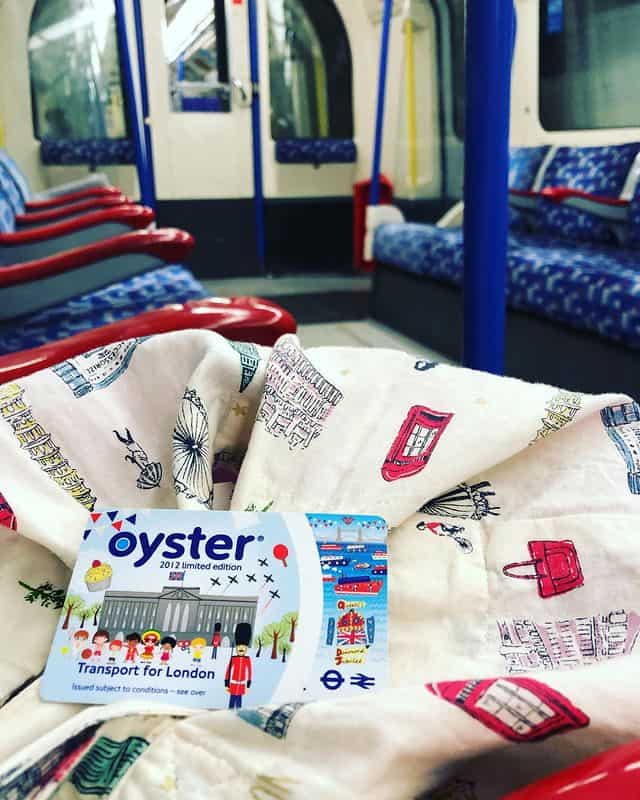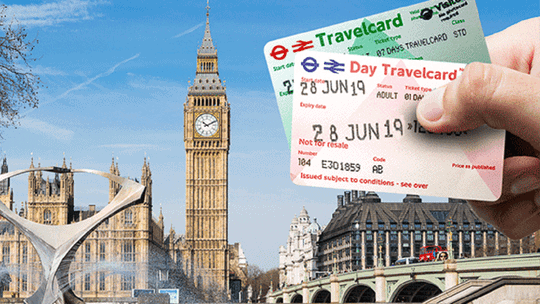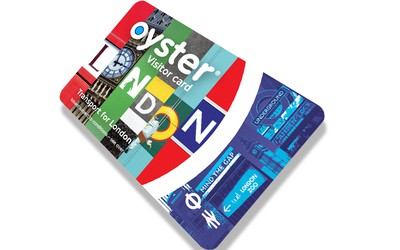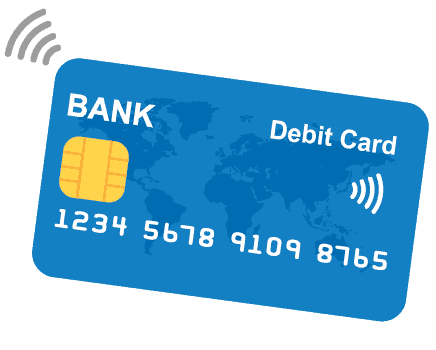If you are preparing for your journey to London, you probably have read numerous London travel guides, from top iconic places to the best London neighborhoods and how to use the London Underground.
You may already be familiar with how to get from one place to another by using several modes of public transportation.
However, one of the most important things you should know when commuting in London is determining the best way to pay for your transportation.
As people progress towards a digital era, cashless transactions with a simple card are becoming more and more prevalent in almost every establishment.
Smartcards are commonly used in London as cashless payments for a variety of popular transportation, including buses, tubes, and trams.
It can also be used in other London public transportation such as London Underground and Overground, DLR, River Bus, and Emirates Air Line.
It is not as simple as just getting the cheapest ticket, but you need to consider its overall usage since you have to check the fare zones it covers, which transportation it is valid, and other pros and cons.
There are not just two, but four cashless payment options to choose from and compare: Visitor Oyster Card, Oyster Card, Travelcard, and Contactless card.
Not to worry though as this guide shows the comparison between each of the cards.
After reading this quick guide, you will learn about:
- Visitor Oyster Card
- Oyster Card
- Travel Card
- Contactless
- Visitor Oyster Card Vs Oyster Card Vs Vs Travel Card Vs Contactless
- Which Is Best For…
- Best for Visitors
- Best for Locals
- Best for Short-Term
- Best for Long-Term
- Affordability
- Convenience
- Multiple Transportation Options
- Frequently Asked Questions
Contents
Oyster Card

The most popular ticket among tourists and locals is a rechargeable Oyster Card.
You can use an Oyster Card to pay for only the trips you take and easily top up when you need more credit. It is a capped ticket, so you don’t pay more than your desired budget.
How Can I Use an Oyster Card?
Oyster Cards should be tapped on the yellow card reader when entering and exiting the station. However, for buses and trams, you only need to tap it once upon entering.
With an Oyster Card, you can combine it with a Travelcard and Bus & Tram Pass to make it more cost-effective.
Use Oyster Cards on London Overground, Tubes, buses, trams, DLR, Elizabeth line, Emirates Air Line, and Thames Clippers River Bus services.
Where Can I Buy an Oyster Card?
There are several ways to buy an Oyster Card, including online with a contactless and Oyster account, ticket stores and machines at stations, Oyster Ticket Stops, Visitor Centres, DLR stations, and the Tramlink Shop in Croydon.
If you already have an Oyster Card and need to recharge, you can top up using the methods in buying an Oyster Card mentioned or use the TfL Oyster and contactless app.
You can also opt for an auto top-up so you don’t have to keep recharging every time.
What Are the Pros and Cons of an Oyster Card?
The best thing about Oyster Cards is that you can add a Travelcard for unlimited travel in specific fare zones.
It is the perfect combination to help you save and be versatile when it comes to traveling in different zones.
Moreover, if you are traveling with children, you can get discounted tickets for them as long as they are with a fare-paying adult.
The only disadvantage with Oyster Cards is the credit that will surely be left on the card. Since it is a pay-as-you-go type of card, there will always be a little amount left on it, and won’t really be a zero balance.
Moreover, since it is a pay-as-you-go type of card, you will have to keep recharging every time, which can be bothersome in some situations if there are no charging stations.
Check out this Complete Guide To Oyster Card to learn more.
Travel Card

Travelcards allow you to travel as much as you want without a capping system. Unlike Oyster Cards, you do not need to top up since it is a fixed fare for unlimited rides in valid zones.
You can choose from six types of Travelcards: Anytime Day Travelcard, Off-peak Day Travelcard, Group Day Travelcard, 7 Day Travelcard, Monthly Travelcard, and Annual Travelcard.
You can check this Travelcard guide to help you choose which card is most suitable for your itinerary.
How Can I Use a Travelcard?
Depending on the type of Travelcard, you can get unlimited rides for a day, week, month, or year in buses, Tube, trams, DLR, London Overground, Elizabeth line, National Rail, Emirates Air Line, and River services.
You choose the zones you wish to travel to and the duration. In case you have to travel to a zone not included in the Travelcard, that’s when an Oyster Card comes in handy.
Where Can I Buy a Travelcard?
If you already have an Oyster Card, you can add a Travelcard through ticket machines and stores at stations, Visitor Centres, online Oyster account, TfL Oyster and contactless app, and Oyster Ticket Stops.
If you want to buy a Day Travelcard, you can only buy it at ticket machines and offices at most stations, Visitor Centres, or the Tramlink Shop in Croydon.
What Are the Pros and Cons of a Travelcard?
Thanks to its unlimited feature, a Travelcard is the most convenient since you do not have to worry about tracking the amount left on the card.
You can keep traveling as much as you want without looking at your card’s balance and the constant need to top up.
It is cost-effective since you can pay for the price of five days with a 7 Day Travelcard, or an 11% discount with a Monthly Travelcard. The more days you purchase, the more savings you have.
The downside about a Travelcard is the limited zones since it is only usable in the zones you choose upon purchase.
Sometimes, you do not know which zones you want to travel to. So if you only purchased a Travelcard for Zones 1 to 3, then those are the only zones you can have unlimited travel.
Visitor Oyster Card

A Visitor Oyster Card is a smartcard specifically for visitors living outside the UK and is used just like a regular Oyster Card.
Visitors can already purchase a Visitor Oyster Card overseas and have it delivered to their homes.
If you want to prepare ahead of time with everything you need in London, a Visitor Oyster Card is a great option.
How Can I Use a Visitor Oyster Card?
You can use it to ride the tube, tram, bus, DLR, London Overground, Elizabeth line, River Bus, and National Rail.
On top of that, you get discounts at restaurants, shops, and several tourist attractions when you use a Visitor Oyster Card to pay.
Similar to an Oyster Card, it is used as a pay-as-you-go fare with a daily limit.
Where Can I Buy a Visitor Oyster Card?
Visitor Oyster Cards are not available in London and can only be purchased at the Visitor Shop website.
If you weren’t able to buy it online, you can also check the available options where you can buy a Visitor Oyster Card in your country or in several UK locations such as Gatwick Airport and Stansted Airport.
What Are the Pros and Cons of a Visitor Oyster Card?
One of the good things about a Visitor Oyster Card is that it allows you to purchase tickets in advance and receive it right at your doorstep.
So as soon as you arrive in London, you already have a ready ticket to use, avoiding the bother of lining up at the ticket stores. If you use up all your credit, you can always top up as much as you like.
However, one of the disadvantages to take note of is that you’ll have to pay a non-refundable £5 deposit for the card, unlike the £5 deposit of a regular Oyster Card where you can still use it as credit.
Plus, you need to pay additional postage fees for the card to be delivered to your home.
Moreover, you won’t be able to add a Travelcard to it, which is a huge downside since Travelcards are typically used together with an Oyster Card to save on costs.
Contactless Card

As long as your bank card has a contactless payment symbol, you can use it right away to pay for your fare.
If your card is issued outside the UK, expect to pay international transaction fees on top of the adult fare rate. American Express, MasterCard, Maestro, Visa, and V Pay are usually accepted as payments.
How Can I Use a Contactless Card?
Paying using Contactless cards is the same as when you tap an Oyster Card.
Simply tap your card on the yellow card reader at the start and end stations when you ride a tube.
You can create a contactless and Oyster account to check your transaction history or apply for refunds.
Where Can I Buy a Contactless Card?
You do not need to buy it since it is your own bank card already. All you need to do is pay for the fare, either as a single fare or use it with pay-as-you-go caps. You can choose to put a daily cap, weekly cap, or off-peak cap.
What Are the Pros and Cons of a Contactless Card?
You do not have to worry about purchasing a travel card since you are using your own bank card.
On top of that, you do not need to top up. You can also choose to put a cap so you can limit your daily expenses.
However, you need to check with your bank if you can use it as a contactless payment in the UK as some bank cards may not work.
Moreover, you may actually spend a little bit more since there are international fees to be paid as well.
Unfortunately, you cannot avail of ticket discounts for children and use a Travelcard if you are using your bank card as a Contactless card.
Check out this Complete Guide To Contactless Card to learn more.
Visitor Oyster Card Vs Oyster Card Vs Vs Travel Card Vs Contactless
To help you decide faster, here is a table of comparison of Oyster Card, Visitor Oyster Card, Travelcard, and Contactless Card.
The table shows a brief price difference and the capping eligibility.
Moreover, you can compare the discounts and special offers you can avail, which transportation you can use, and expiration.
| Oyster Card | Visitor Oyster Card | Travelcard | Contactless Card | |
| Price | £5 Deposit
Choose from a variety of capped prices, starting at £7.70 for Daily Peak for Zone 1 only. |
£5 Non-refundable deposit, plus choose your desired fare credit (£10, £15, £20, £25, £30, £35, £40, or £50) | Starting at £14.40 (Day Anytime), £14.40 (Day Off-Peak), £38.40 (7 Day), £147.50 (Monthly), and £1,536 (Annual) for Zone 1 only. Check the complete price at Tube and rail fares. | Pay with the same fare as Oyster Cards. |
| Capping | Caps can be for Daily Peak, Daily-Off Peak, and Monday to Sunday | Choose from Single Peak, Single Off Peak, or Daily cap of £7.20 | None | Caps can be for Daily Peak, Daily-Off Peak, and Monday to Sunday |
| Discounts | Discount for children, Eligible for Travelcard, Special offers and discounts at restaurants and stores | Young Visitor discount for children, Not eligible for Travelcard, Special offers and discounts at restaurants and stores | Group Day Travelcards for discounted tickets, 33% discount on River Boat, 25% discount on
Emirates Air Line |
Not eligible to avail discount tickets for children and Travelcard |
| Top Up | Eligible for top ups | Eligible for top ups | Not applicable | Not applicable |
| Expiration | No Expiration | No Expiration | Can only be used on the dates indicated on the ticket. Expires after the last day of validity. | Not applicable |
| Transportation | Bus, London Underground, London Overground, National Rail (London), DLR, tram, most Elizabeth line, Emirates Air Line, Thames Clippers River Bus services | Bus, London Underground, London Overground, tram, DLR, Elizabeth line, River Bus, most National Rail services (London) | Bus, London Underground, London Overground, National Rail, Elizabeth line, DLR, tram, Emirates Air Line, River Bus | Bus, London Underground, London Overground, most National Rail services (London), tram, DLR, TFL Rail. |
Which Payment Method is the best?
Best for Visitors
Both Oyster Card and Visitor Oyster Card provide convenience and affordability for tourists thanks to its pay as you go feature.
If you want to get your card in advance in your country, opt for the Visitor Oyster Card. If you want to be able to refund your excess fare, then an Oyster Card is better.
Plus, both cards have no expiration date, so you can use it again when you go back to London.
However, if you are traveling to many places in a week, a Travelcard is also the best option to combine with your Oyster Card.
Best for Short-Term
If you are staying for a few days and are traveling within London, then an Oyster Card is the best option.
You only need to pay for the exact fare of each commute you make. For unlimited one-day travel, you can also use the Day Travelcard equipped for Zones 1 to 6.
You can choose Anytime Day Travelcard and travel regardless of peak hours.
Alternatively, Off-peak Day Travelcard is another good option if your itinerary includes travels from 9:30 am to 4:30 am the next morning.
Best for Long-Term
For travelers staying for a week, month, or year, the most hassle-free card is the Travelcard since you do not need to keep recharging.
This is best for travelers who plan to go around London every day. However, if you are staying in London long-term with minimal travel, an Oyster Card would be better.
Best for Affordability
It really depends on where you are going and how much you plan to travel around.
However, the most affordable ones are Oyster Cards and Travelcards, especially when used together.
It is the best combination to save more, particularly when you are traveling through several zones in London.
Best for Convenience
Contactless Cards can be the most convenient if you do not want to buy a ticket or card anymore and without the need to top up.
Unlimited travel with a Travelcard is also convenient since you do not need to keep recharging as well.
If you want to avoid lining up in long queues for a ticket, opt for Visitor Oyster Card and Contactless Cards.
Multiple Transportation Options
All cards are suitable for most public transportation in London. Whether you are riding a bus or catching a tube, you can easily pay with any of the four tickets.
However, keep in mind that you cannot use it for Heathrow Airport services and some National Rail services.
Frequently Asked Questions
Is Oyster Cheaper than Contactless?
Oyster Card is relatively cheaper since you may be charged international fees with Contactless cards.
However, the prices and capping system remain the same with both cards.
Although there is a £5 deposit requirement in Oyster Cards, you can always get it back by having it refunded.
Is It Cheaper to Get a Travelcard or Oyster Card?
Generally, it depends on how many times in a day you are riding transportation and which zones you are traveling to.
If you think you will be traveling to multiple places in a day, then the unlimited Travelcard is the best option.
However, if you are going to limited places only, Oyster Card is more inexpensive since you only pay as you go.
Can You Use Oyster on c2c trains?
Yes, you can use Oyster Cards in Zones 1 to 6 in c2c trains in London. In fact, you can also get a Travelcard on a c2c smartcard using the c2c Train Travel app.
Can I add Railcard to Oyster Cards?
Yes, you can add Railcard to Oyster Cards through ticket offices at the stations of London Underground, London Overground, Elizabeth line, some National Rail ticket offices, and Oyster Ticket Stops.
Go to the ticket office and ask a staff member to add the Railcard to your Oyster Card.
Moreover, you can also add a Railcard discount to an Anytime Day Travelcard if purchased outside London.
Can I Use Oyster App Instead of Card to Pay?
The Oyster Card app is only used to access your Oyster account, track your balance, and make refunds.
Moreover, it is used to make top ups, making it an easier option than lining up at the ticket machines and offices. It cannot be used to pay for journeys since you will still need the Oyster Card itself to pay.
Do You Need to Register Contactless Card for Tube?
It is not necessary to register and create an Oyster account since you can use your bank card to pay instantly for Tube fares.
Registration is only needed if you want to track your transactions online or through the app.
Moreover, you only need to register if you want to apply a cap for your bank card to prevent you from exceeding your daily budget.
The Verdict: Which One Should You Buy?
Consider your travel itinerary first and the zones you plan to go to. Are you traveling in a group or are you traveling with children?
These are also some considerations since you can get discounted tickets for these.
Moreover, are you after convenience or affordability? Although all cards are considered tourist-friendly and convenient to use, you may want to consider the overall price as well.
For instance, Oyster Cards are pay as you go cards but you will need to keep recharging every time you use up your credit.
All types of cards have their pros and cons. It would just depend on your preferences and how you want to travel with ease.
I hope this simple guide helped you decide which card is best for your London travels.
Did you find this article helpful? Let us know how this was helpful to you.
If you have already used any of the cards in this article, which one would you recommend? Share your thoughts below in the comment section.



Hello, thank you for your helpful site. We are a retired couple planning a month-long visit to London in October/November. We are willing to travel only on off peak hours and only by bus, if that makes a difference ( we heard of a “bus and tram card”.). We will travel to one location and back per day. For a one month period, is our best option the monthly Travelcard or the pay as you go Oyster card for cheapest transport? Thank you.
Hello Leah,
For a month-long visit to London where you plan to travel primarily during off-peak hours by bus and tram, the best option for cost-effective transportation would likely be to use a pay-as-you-go Oyster card rather than a monthly Travelcard.
Here’s why:
Pay-as-You-Go Oyster Card: With an Oyster card, you can load it with credit and pay for your journeys as you go. The daily fare cap and weekly fare cap on Oyster cards mean that once you’ve reached a certain spending limit in a single day or week, you won’t be charged for additional travel on that day or week. This ensures that you won’t pay more than the cost of a monthly Travelcard, even if you travel frequently within a week.
Flexibility: The pay-as-you-go Oyster card offers flexibility. You can use it for bus and tram journeys as well as other forms of public transport like the London Underground, DLR (Docklands Light Railway), and some National Rail services within London. If you decide to take other modes of transportation or visit areas not covered by a Travelcard, the Oyster card will still be valid.
No Need to Commit: With a monthly Travelcard, you commit to a full month of travel, and it may not be cost-effective if you’re primarily using buses during off-peak hours. The Oyster card allows you to pay only for the journeys you actually take.
Visitor Oyster Card: As tourists, you might also consider purchasing a Visitor Oyster card, which is designed for tourists and offers additional discounts and special offers on attractions and restaurants in London. It operates similarly to a regular Oyster card.
To maximize savings with an Oyster card, consider using contactless payment (if you have a contactless payment card from a bank that supports this) or top up your Oyster card with enough credit for your daily travel needs. You can check the current fare caps and pricing on the official Transport for London (TfL) website to ensure you’re getting the best deal based on your planned daily and weekly travel.
Remember to touch in and out on buses and trams to ensure you’re charged the correct fare. Enjoy your month-long visit to London!